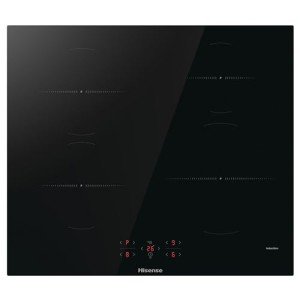Induction Hob Advantages Tips To Relax Your Everyday Lifethe Only Induction Hob Advantages Trick Every Person Should Be Able To

Induction Hob Benefits: A Smart Choice for Modern Kitchens
Induction hobs have gotten substantial traction recently as a cooking alternative in modern kitchen areas. With their sleek design and advanced technology, they not only raise the visual of kitchen areas but likewise provide a myriad of benefits to both amateur cooks and expert chefs. This short article explores the numerous advantages of induction hobs, how they run, and why they're ending up being a popular option for homes around the world.
Understanding Induction Hobs
Before leaping into the benefits, it is vital to comprehend how induction hobs operate. Unlike standard gas or electric stoves that count on direct flame or glowing heat, induction hobs use electro-magnetic fields to straight heat up pots and pans. When a compatible cookware product-- such as cast iron or stainless steel-- reaches the hob, the induction coil produces heat, cooking the food efficiently.
Key Features of Induction Hobs
- Immediate Heat Control: The minute the cookware is put on the hob and turned on, heat is generated quickly. This permits rapid heating and accurate temperature level control.
- Energy Efficiency: Induction cooking is extremely efficient, as up to 90% of the heat produced is moved to the pot, lessening energy loss.
- Precaution: Most induction hobs come geared up with security features such as automated shutoff and child lock systems. The surface area remains cool to the touch, lowering instances of burns.
Advantages of Induction Hobs
Here are some engaging reasons to think about installing an induction hob in your cooking area:
1. Energy Efficiency
Induction hobs considerably reduce cooking times compared to gas and electric hobs. This energy-saving benefit is not just advantageous for the environment but likewise causes decrease utility costs.
Benefits:
- Reduced cooking time
- Lower energy intake
2. Faster Cooking
Due to the fact that induction hobs heat up quickly, they permit cooks to prepare meals in less time. This can be particularly useful when meal prepping or hastily preparing meals on hectic weeknights.
Key Points:
- Immediate heating
- Quick response to temperature level modifications
3. Safety Features
Induction hobs are developed with user safety in mind. linked here cooking surface area remains relatively cool, minimizing the threat of accidental burns or fires.
- Automatic Shut-Off: When cookware is gotten rid of, the hob automatically shuts off, enhancing security.
- Cool-to-Touch Surface: The hob itself stays cool, decreasing the risk of burns.
4. Easy to Clean
Traditional gas and electric hobs can be challenging to clean up due to food spills and scorched residues. Induction hobs, with their flat surface, make cleaning easy and effective.
Cleaning up Tips:
- Use a damp fabric for routine cleaning.
- For tougher discolorations, specialized induction hob cleaners can be utilized.
5. Precise Temperature Control
Induction hobs offer unrivaled temperature control, allowing users to simmer, burn, and cook to perfection with ease. This offers higher versatility in cooking methods.
Cooking Techniques:
- Simmering sauces
- Burning meats
- Boiling pasta
6. Trendy Design
Numerous induction hobs include contemporary designs that can quickly suit any cooking area décor. They are readily available in numerous sizes and styles, from single burners to expansive, multi-zone models.
Comparison of Cooking Methods
Below is a table illustrating the crucial differences between induction hobs, gas ranges, and electrical ranges.
| Function | Induction Hob | Gas Stove | Electric Stove |
|---|---|---|---|
| Heat Method | Electromagnetic | Flame | Electric Resistance |
| Efficiency | Up to 90% | Around 40% | Around 70% |
| Safety | High (cool surface) | Moderate | Moderate |
| Speed | Fast | Moderate | Slow |
| Cleaning up | Easy | Challenging | Moderate |
Cooking Considerations
When considering the switch to an induction hob, there are a couple of considerations to remember:
- Cookware Compatibility: Only ferrous (magnetic) materials deal with induction hobs. Cast iron or stainless-steel pots and pans is perfect, while glass, aluminum, and copper usually need a special magnetic base.
- Cost: While induction hobs might be more costly upfront than standard range types, their efficiency and sturdiness often make them a worthwhile investment.
FAQs
Q1: Can I utilize my existing cookware on an induction hob?A1: Only ferrous products will work. If a magnet sticks to your pots and pans, they ought to work. Q2: Are induction hobs safe for children?A2: Yes
, with features like automated shut-off and a cool surface area, they are designed to be safe. However, adult guidance is always suggested. Q3: Do induction hobs produce infrared radiation?A3: No, induction
hobs do not produce infrared radiation;
they entirely generate heat through magnetic fields. Q4: Can you prepare with induction hobs during a power outage?A4: Induction hobs require electrical power to run, so they will not work throughout a power outage.
Induction hobs are a compelling cooking option that embodies the ideal blend of efficiency, safety, and modern design. As innovation continues to evolve in the cooking world, induction cooking represents a sensible option for contemporary kitchens. With the various benefits they provide, induction hobs are undoubtedly a wise investment for both cooking lovers and daily cooks alike. Whether you're struggling with your existing setup or merely aspiring for a more streamlined cooking experience, an induction hob might simply be the service you've been seeking.

